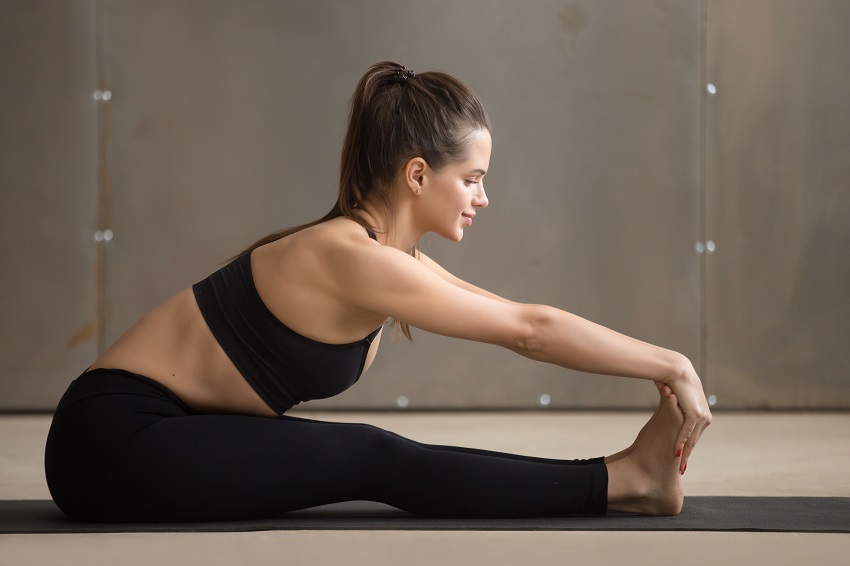Seated Forward Bend Pose:
Name: Seated Forward Bend Pose
Sanskrit: Paschimottanasana
Pronunciation: pah-shee-moe-tah-NAHS-ah-nah
Pose Level: Intermediate

Step-by-Step:
- Firstly, sit on your mat and stretch your legs forward, keeping your back straight and relaxed.
- Then, inhale slowly and raise your arms above your head. Then, exhale and flex your torso gradually forward starting the movement from the hips. Movement must be slow and effort must be avoided. The back must remains straight.
- Lower yourself as much as possible with the trunk until you reach your limit; at this point, relax your back, shoulders, neck and head. If possible, place your elbows on the ground next to your legs.
- The back muscles must be relaxed. Breathe deeply and try to bring the trunk as close to the legs as possible.
- Stretch the spine and keep the knees and the legs straight.
- Try to grasp the soles of your feet with your hands. If you can’t reach that far with your hands, grab your toes or ankles, your calves or knees. In any case, you must avoid strenuous effort, proceeding gradually.
- This is the final posture.
- Breathe normally and try to stay in Pashimottanasana for about a couple of minutes or as long as possible.
- To return to the initial posture phase, relax your back and arms by placing your hands on the ground. Then, lift your back until you return to a sitting position.
Benefits:
- Helps relax the mind and reduce stress while improving concentration;
- Massages and tone the pelvic and abdominal area;
- Improves digestion and reduces constipation;
- Increases the flexibility of the hips and spine;
- May help promote sleep;
- With the therapeutic nature of yoga, it may help reduce blood pressure and heart rate, acutely.
Pose Modifications:
If comfort is an issue when stretching, you can bend your knees slightly. Alternatively, you can place a bolder or cushion under the hips/buttocks. As long as you don’t strain with it, a band or yoga belt can be used as an extension between your hands and feet. Another variation is to place the hands on the ankles or on the shins. You can place a yoga block, meditation cushion or even a bolster under your buttocks, these can help tremendously.
Contraindications:
It is important to avoid the practice of Paschimottanasana in some cases:during pregnancy, especially if advanced, speak with a medical professional;
asthma sufferers or if having breathing problems;
recent back or abdominal surgery;
diseases related to the spine, such as slipped discs;
sciatica sufferers may or may not find relief from this pose.
Poses Commonly Transitioned too:
Halasana, Plow Pose
Poses Commonly Transitioned From:
Staff Pose, Dandasana




